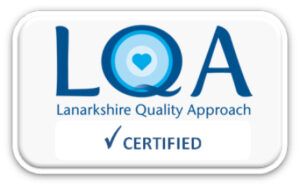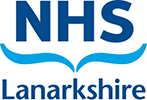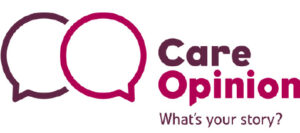Sodium (Salt) Tips for people with Chronic Kidney Disease (CKD)
Information for patients
NHS Lanarkshire Dietetic Department
PIL.SALTSD.02858.L
What is Sodium (Salt)?
Sodium is another name for salt. Sodium is found in many canned, packaged, and fast foods. It is found in many sauces and seasonings.
Why is Sodium Important for People with CKD
Eating less sodium helps lower blood pressure and may slow down progression of your kidney disease. Try to keep your blood pressure to an acceptable target agreed with your doctor.
One of the kidneys’ important jobs is to filter sodium out of the body and into the urine. Damaged kidneys cannot do this as well as healthy ones. This can cause sodium to stay in your body and make your blood pressure go up. Taking a lot of salt or salty foods makes you thirsty and this can be a problem if you need to follow a fluid restriction.
How much Sodium Should I Eat Every Day?
Most people need to eat less salt/sodium than they are eating. Currently UK average is 9-12g salt per day. This is too much. Aim for 4-6g of salt each day. Much of the sodium/salt you eat comes not just from a salt shaker but from everyday foods you eat. It is added to the prepared foods you buy in the supermarket e.g. ready meals, fast foods, canned/packet or bottled foods.
Foods lower in sodium
- Fresh or frozen fruits and vegetables
- Plain rice and noodles
- Fresh beef, lamb, pork and chicken
- Fresh, unsmoked fish, fish tinned in sunflower oil or spring water
- Unsalted nuts (watch if you need to be careful with your phosphate or potassium)
- Plain popcorn
- Herbs and spices
- Couscous, pasta, rice and potatoes
- Eggs
- Emmental, mozzarella, ricotta
- Plain cheese spreads
- Plain cottage cheese
- Pulses (peas, beans, lentils)
- Fresh fish not smoked
- Fresh meat and poultry
- Yogurt, fromage frais
Foods higher in sodium
- Bacon, corned beef, ham, hot dogs, luncheon meat, sausage
- Canned and instant soups
- Canned meats, beans
- Smoked meat and fish
- Salami, pastrami
- Olives, pickles
- Canned tomato products e.g baked beans
- Ready made/ frozen meals with high salt contents
- Coated chicken e.g. chicken nuggets, chicken kiev
- Cheese
- Chips if salt added
- Gravy granules
- Noodle snack pots
- Anchovies, capers
- Ham
- Pretzels, crisps, salted and dry roasted nuts
- Packet sauces
- Soy sauce, bottled sauces, marinades
- Some cereals, breads
- Salt and salt seasoning, like garlic salt
- Yeast extract e.g.marmite
- Stock cubes and bouillon
- Soy sauce, chilli sauce and tomato ketchup or use sparingly
How Do I Lower the Sodium In My Diet?
- Buy fresh foods more often
- Cook foods from scratch, instead of eating prepared foods, “fast foods”
- If using ready made meals check the salt content and try and choose ones lower in salt see below
- Use herbs, spices, pepper, vinegar, lime, wine, lemon juice, apple, cranberry and mint sauce to flavour foods rather then salt
- If using stock cubes try ½ stock cube to a pint of water or low salt ones but still try and use ½ stock cube to one pint water
- Low salt stocks, gravies and sauces but better still make your own
Look Out For ‘Salt’ Or Sodium On The Label
Most labels now give the salt and or sodium the food contains with either per 100g or by portion/serving.
- Always read the label to compare foods
- The salt content should be ideally 1.0g salt per 100g or less
- The sodium content should be ideally 0.3g sodium per 100g or less
- On the label it should tell you what amount of salt or sodium is in it per 100g
How much salt?
Per 100g
less than 0.3g salt
less than 0.1g sodium
Per 100g
between 0.3g – 1.0g salt
0.1g – 0.4g sodium
Per 100g
1.1g – 1.5g salt
0.4g – 0.6g sodium
Per 100g
More than 1.5g salt
More than 0.6g sodium
Per portion/serving
More than 1.8g salt
More than 0.7g sodium
If you buy a food that has all or mostly greens on the label, you know this is a healthier choice.
Amber means neither high or low, so you can eat foods amber foods on the label most of the time but any red on the label is too high and these foods should be cut down on. Try and eat these foods less often and in smaller amounts.
Looking at the labels:
Each 100g serving contains:
|
Energy 248 kcal 12% |
Fat Med 3.8g 5% |
Sat Fat High 8.1g 41% |
Sugar Med 9.1g 10% |
Salt Low 0.2g 3% |
| Food Comparisons | Salt Content Per 100g |
|
Bread Branded label |
1.18g |
|
Cornflakes Branded label |
1.8g |
|
Rice Krispies Branded label |
1.6g |
Remember salty ingredients can add up in a meal so try to choose options that add up to less than 2g salt per meal.
Check the Ingredient Label for Added Sodium
- Salt (sodium chloride)
- Monosodium glutamate or MSG
- Baking soda (sodiumbicarbonate)
- Baking powder
- Sodium nitrate
- Sodium sulfite
- Sodium phosphate
- Sodium benzoate
- Sodium hydroxide
- Sodium propionate
- Sodium alginate
Did You Know?
Ingredients are listed in order of the amount in the food. The food has the most of the first ingredient on the list and the least of the last ingredient on the list.
Pub. date: August 2022
Review date: August 2024
Issue No: 03
Reference: PIL.SALTSD.02858.L
22_17869
If you need this information in another language or format, please e-mail:





